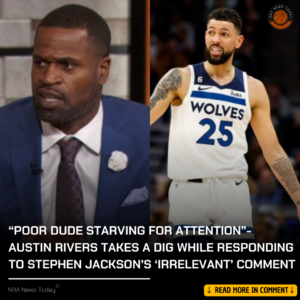Sochan’s lack of shooting creates issues for the entire team and could make him the wrong fit next to a dominant frontcourt player.
/cdn.vox-cdn.com/uploads/chorus_image/image/73240590/usa_today_22592359.0.jpg)
The Spurs have gone through some big changes this season, designed to solve issues, both self-inflicted and otherwise. Since solidifying what is now the regular starting lineup, they seemed to find some success until recently, when a problem with the Jeremy Socha-Victor Wembanyama pairing reared its head.
In simple terms, Wembanyama has been playing in hard mode for most of his time at center, as it’s too easy for opponents to do two things that make life hell on offense for Victor without suffering for it. First, they can put a mobile defender on him to bother him in the perimeter while hiding their center on Jeremy Sochan. Second, they can then leave Sochan open and have their center roaming to offer help when Wembanyama gets closer to the paint, in the post or the pick and roll. The Suns used Kevin Durant on Wemby, the Nuggets used Aaron Gordon, the Rockets Dillon Brooks, the Mavericks Derrick Jones Jr. and P.J. Washington, etc. Going back weeks, teams have at least tried out the strategy and most have committed to it because it’s a smart, successful one that San Antonio hasn’t been able to counter consistently.
In theory, the improvement Sochan showed as an outside shooter earlier in the year would be a deterrent for this game plan. Unfortunately, after shooting 38 percent during a three-month period from November to January, Sochan has regressed tremendously and has shot 21 percent since the start of February. He’s averaging just a shade under 31 percent for the season and 32.4 percent on wide-open threes, which comprise the majority of his attempts. Occasional game-winner aside, it’s a win for the defense if the ball gets to Sochan beyond the arc because he’ll likely miss. Even if he connects, he takes away possession from Wembanyama and other better options and disrupts the rhythm of the offense.
To his credit, Sochan tries his best to make them pay for leaving him open and sometimes succeeds. He crashes the boards and attempts to drive when he gets the ball or cut when he doesn’t. The cramped spacing that having other non-shooters on the floor hurts him in those situations, but he tries. The Spurs have also attempted to counter the issue by having him initiate at times, which could work, but opponents sag off and take away angles. He’ll try to sneak into the dunker spot, but there are so many bodies in the paint that it’s hard to find him open consistently, especially when opponents shrink the floor off others, most commonly Tre Jones among the starters. When the second unit comes in, Malaki Branham and Blake Wesley are the ones who are often left with room from the perimeter.
The big issue with what seems a relatively easy-to-solve spacing problem is that it involves a former lottery pick who is projected to be the power forward of the future. By no means should the Spurs give up on the 20-year-old, but when thinking about potential solutions, the easiest is “don’t play Wembanyama and Sochan together,” which is concerning. The optimistic outlook is that Sochan, who shot under 25 percent from outside as a rookie, has improved his shooting as a sophomore and if he continues to do so, the problem will disappear. But does Sochan have vast amounts of untapped potential as a marksman? It would be a success story for him to get to league average on a healthy amount of attempts, considering his skills when he joined the league and his current shooting form, but that might not be enough to dissuade opponents from leaving him open.
Not everything is doom-and-gloom about the Wembanyama-Sochan pairing. It could work. They could be a force on defense and should be able to figure out ways to hurt opponents who just abandon Sochan, especially if Wemby’s perimeter game continues to improve. A 5-4 pick and roll with Wemby as the ball handler could put defenders in the tough position of doubling Wemby and giving Sochan room to operate on a 3-on-4 situation in the middle of the floor or switch, which would force the center to guard Wembanyama. The Spurs could also use Sochan the same way they tried to use Collins: as a facilitator at the top of the arc with shooters moving around him while he works hand-offs and finds cutters until the defense has to play him close to impede his vision. That’s how Draymond Green used to create spacing and Sochan should be able to do it as well.
There are potential palliative measures for this problem. It’s just hard to find a solution unless Sochan becomes a feared shooter. It will be on the coaching staff and the front office to patiently try different things and eventually make a call about whether the good about the Sochan-Wembanyama pairing outweighs the bad. It’s clear who the centerpiece of this team is and whoever doesn’t fit around Victor should be considered expendable.
We are not at that point yet, thankfully. Sochan has shown how good he can be on defense and in most areas of offense except for shooting. He’s also a hard worker who has already improved on several weaknesses and has the right mindset, as exemplified by his willingness to change his free throw form and continue to fire away when dared to. He’s also incredibly young.
For now, no drastic decisions are necessary. This has been a data-gathering season and knowing what doesn’t work is as important as finding out what does. Players will continue to grow and the roster will change, with those fluctuations solving some issues and creating others. Hopefully, this will just be a temporary problem that won’t force the Spurs to split up their two best frontcourt players.
News
Will The Mets Trade Pete Alonso?
The Mets head to London for a World Tour series against the Phillies this weekend. Even after sweeping the Nationals, New York owns a 27-35 record that has them above just the Rockies and Marlins in the National League. They’re…
LA Kings and Anaheim Ducks will have new jerseys and primary logos next season
Photo credit: MayorsManor The Los Angeles Kings and the Anaheim Ducks are set to have new jerseys and primary logos next season. A new report revealed that Fanatics, the brand hired by the NHL to produce their jerseys for the…
Oilers Stanley Cup Finals ticket prices are revealed and fans are shocked
Photo credit: Rogers Place The Stanley Cup Finals are the pinnacle of the NHL, and now that they once again feature a Canadian team, prices are absolutely through the roof. It’s common knowledge that Canadian fans are the most passionate…
“Poor Dude Starving for Attention”- Austin Rivers Takes a Dig While Responding to Stephen Jackson’s ‘Irrelevant’ Comment
Stephen Jackson, Austin Rivers (Image Source: Getty Images) After a recent conversation, there appears to be growing animosity between Stephen Jackson and Austin Rivers, two former NBA players. Jackson labeled Rivers irrelevant, which prompted Rivers to reply on X, the previous Twitter platform. Austin…
Bruins, Stars, Avalanche emerge as favorites to land Patrick Kane
Photo credit: Detroit Red Wings The betting odds for Patrick Kane’s next team have been released and we now know that the Bruins, Stars, and Avalanche are the favorites to land the American superstar winger. The betting odds released today…
Former NBA Guard Delonte West Arrested Again, Disturbing Mugshot Released
Delonte West (Photo by Harry How/Getty Images). Former NBA player Delonte West was arrested again this Thursday, according to an official representing the Fairfax County Detention Center. The 40-year-old was booked on a pair of misdemeanor charges, having violated the conditions of…
End of content
No more pages to load











